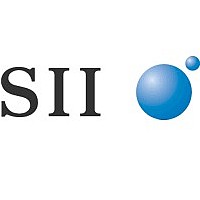S-8241 Seiko Instruments, S-8241 Datasheet - Page 16

S-8241
Manufacturer Part Number
S-8241
Description
Battery Protection IC for 1-Cell Pack
Manufacturer
Seiko Instruments
Datasheet
1.S-8241.pdf
(32 pages)
Available stocks
Company
Part Number
Manufacturer
Quantity
Price
Part Number:
S-8241AAAMC-GAA-T2
Manufacturer:
SEIKO/精工
Quantity:
20 000
Part Number:
S-8241AAMC
Manufacturer:
SEIKO
Quantity:
20 000
Company:
Part Number:
S-8241AAQMC-GAQ-T2
Manufacturer:
SEIKO
Quantity:
38 253
Company:
Part Number:
S-8241AARMC-GAR-T2
Manufacturer:
SEIKO
Quantity:
3 186
Part Number:
S-8241AASMC-GAS-T2
Manufacturer:
SEIKO/精工
Quantity:
20 000
Company:
Part Number:
S-8241AATMC-GAT-T2
Manufacturer:
SEIKO
Quantity:
7 115
Company:
Part Number:
S-8241AAVMC-GAV-T2
Manufacturer:
ANALOGIC
Quantity:
3 123
Company:
Part Number:
S-8241AAXMC-GAXT2G
Manufacturer:
SEIKO
Quantity:
18 000
Part Number:
S-8241AAXMC-GAXT2G
Manufacturer:
SEIKO/精工
Quantity:
20 000
Part Number:
S-8241AAXMC-GAXT2S
Manufacturer:
SEIKO/精工
Quantity:
20 000
16
BATTERY PROTECTION IC FOR 1-CELL PACK
S-8241 Series
Abnormal Charge Current Detection
Delay Circuits
Caution 1. After having detected an overcurrent (overcurrent 1, overcurrent 2, short-circuiting), the state is
If the VM pin voltage drops below the charger detection voltage (V
condition and it continues for the overcharge detection delay time (t
charging control FET off and stops charging. This action is called abnormal charge current detection.
Abnormal charge current detection works when the discharging control FET is on (DO pin voltage is “H”)
and the VM pin voltage drops below the charger detection voltage (V
current flows into a battery in the overdischarge condition, the S-8241 consequently turns the charging
control FET off and stops charging after the battery voltage becomes the overdischarge detection voltage
or higher (DO pin voltage becomes “H”) and the overcharge detection delay time (t
Abnormal charge current detection is released when the voltage difference between VM pin and VSS pin
becomes lower than the charger detection voltage (V
Since the 0 V battery charging function has higher priority than the abnormal charge current detection
function, abnormal charge current may not be detected by the product with the 0 V battery charging
function while the battery voltage is low.
The following detection delay times are generated by dividing the approximate 2 kHz clock with a counter.
[Example] Overcharge detection delay time (= abnormal charge current detection delay time): 1.0s
2. Counting for the overcurrent 2 detection delay time starts when the overcurrent 1 is detected.
Overcurrent 1 detection delay time:
Overcurrent 2 detection delay time:
held for the overdischarge detection delay time or longer without releasing the load, the condition
changes to the power-down condition when the battery voltage drops below the overdischarge
detection voltage. If the battery voltage drops below the overdischarge detection voltage due to
overcurrent, the discharging control FET is turned off when the overcurrent is detected. If the
battery voltage recovers slowly and if the battery voltage after the overdischarge detection delay
time is equal to or lower than the overdischarge detection voltage, the S-8241 changes to the
power-down condition.
Having detected the overcurrent 1, if the overcurrent 2 is detected after the overcurrent 2 detection
delay time, the S-8241 turns the discharging control FET off as shown in the figure 5. In this case,
the overcurrent 2 detection delay time may seem to be longer or overcurrent 1 detection delay time
may seem to be shorter than expected.
Overdischarge detection delay time:
DO pin
VM pin
V
V
V
V
V
V
IOV1
IOV2
SS
DD
DD
SS
Overcurrent 2 detection delay time (t
Seiko Instruments Inc.
Figure 5
125 ms
8 ms
2 ms
CHA
) by separating the charger.
CHA
CU
IOV2
CHA
) during charging under the normal
) or longer, the S-8241 turns the
)
). When an abnormal charge
Time
Time
CU
) elapses.
Rev.4.1
_01













